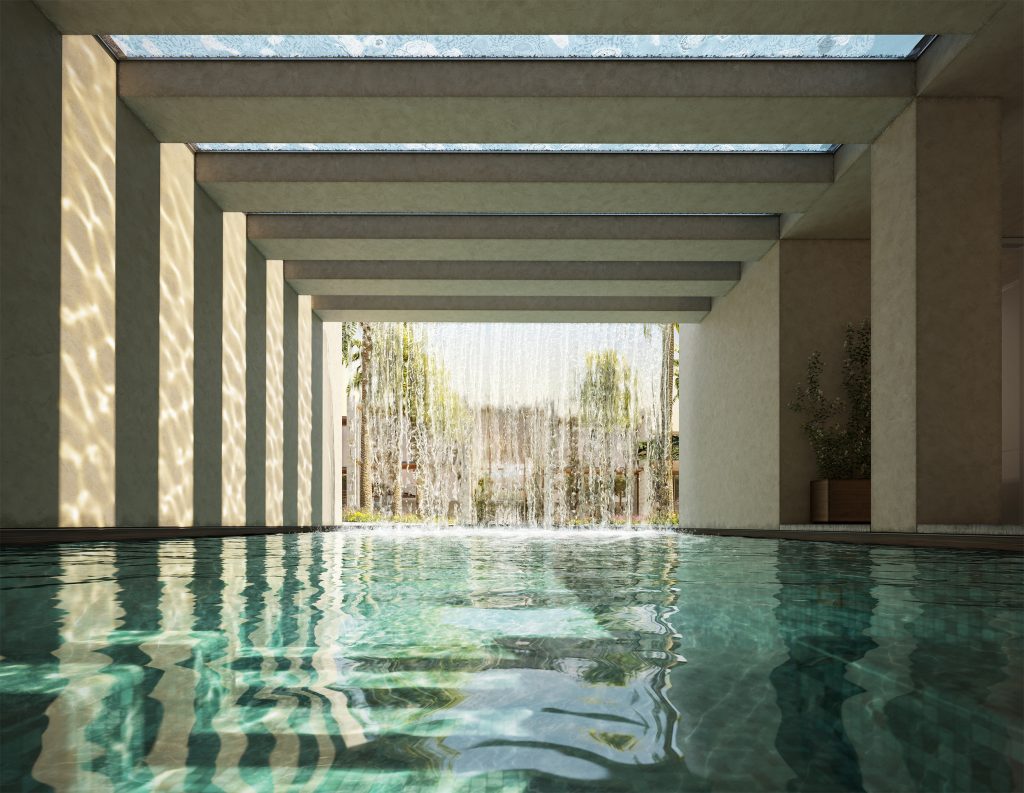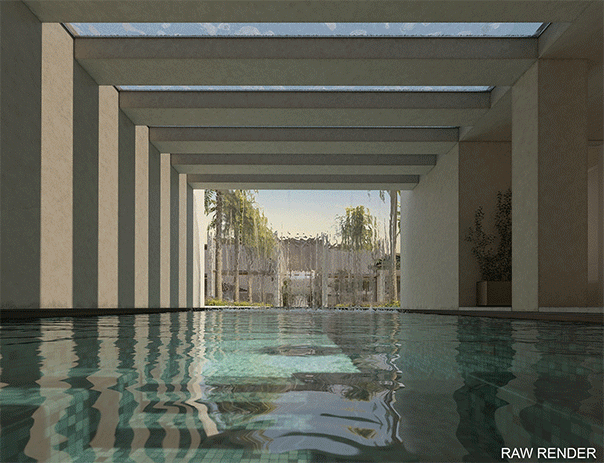SO-ON (Something out of Nothing) is the creation of Guilherme Pinheiro and Mark Staddon, launched earlier this year in Brisbane, Australia. Here they talk about their recent work on the Riyadh Residence project, with a focus on how they created the unique perspective of the waterfall shot.
Read more on how this image was created
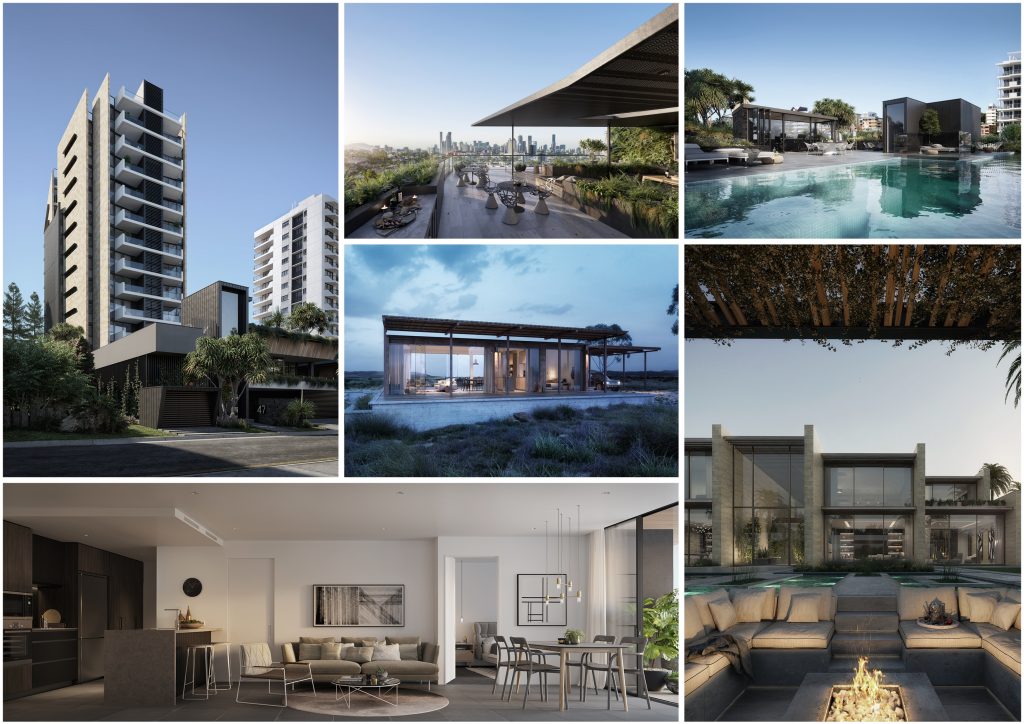
Firstly, we’d like to thank everyone who has taken an interest in our work. Both of us have used Corona since Alpha 4 and SO-ON is 100% Corona for all of our work. We’re REALLY happy with the results we can generate with this engine. Corona allows us to generate scene lighting quickly which in turn gives us more time to explore the creative side of a project, especially for commercial work as this project was.
‘The Riyadh Residence’ designed by London Architects OAOA offered us some interesting imagery concepts to work towards. The waterfall shot was one of the more conceptual ideas our client wanted to explore and it was the first time we have created a ‘hero’ waterfall for an image.
We’re glad to be invited to share a little bit more on this process with you.
Composition and Lighting
Using the rule of thirds, we spent quite a bit of time on the composition of this shot. We then set our lighting, in this case corona sun + an HDRI (with hotspot removed in Photoshop) for GI. Our lighting direction was chosen to balance the vertical elements on the right of the image using the vertical shadows on the left cast by the beams above the pool.
Below is combination of the compositional considerations and base lighting.
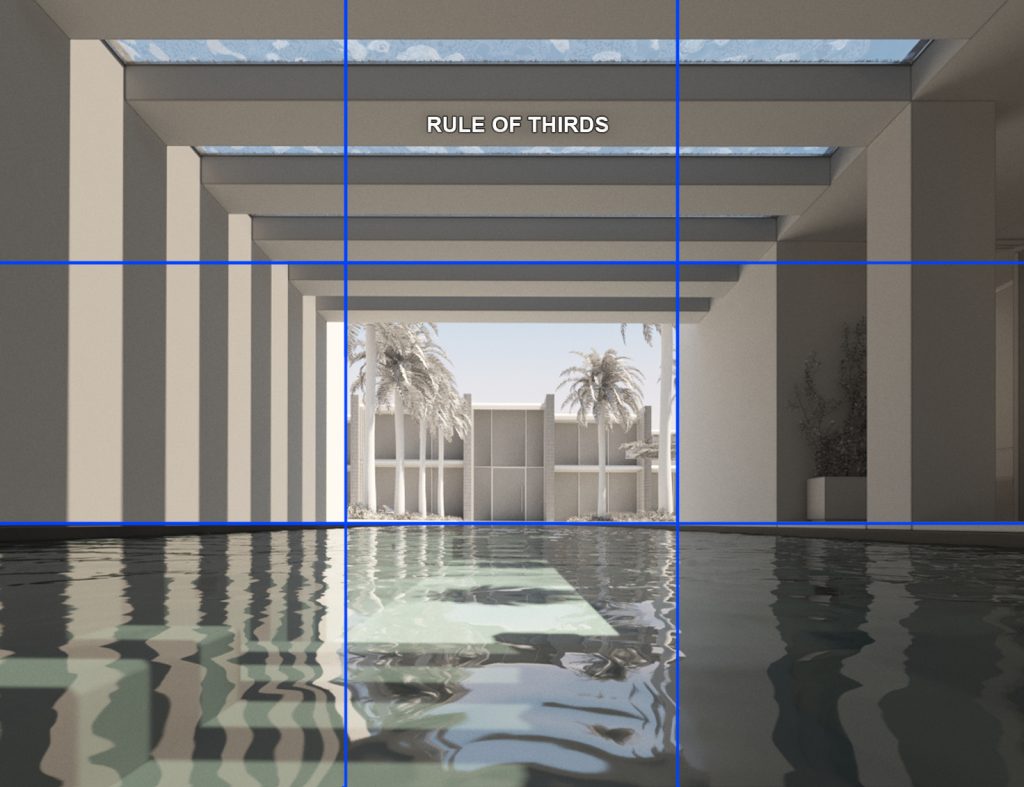
Once we had the composition balanced we could focus on bringing the other pieces together.
The Waterfall
This was the one of the more detailed water effects we have worked on, so the process involved a bit experimentation. Ultimately we wanted to create something that thinned and broke apart as it fell towards the pools surface in order to better reveal the residence in the background.
We used Realflow to come up with the base mesh for the waterfall. Realflow provided necessary control over the waterfall mesh which we generated using a thin plane to define the water particle origin and refining the gravity and noise modifiers to suit. We then applied a basic water material to the mesh, as much of the additional detail and movement would be added later in Photoshop.
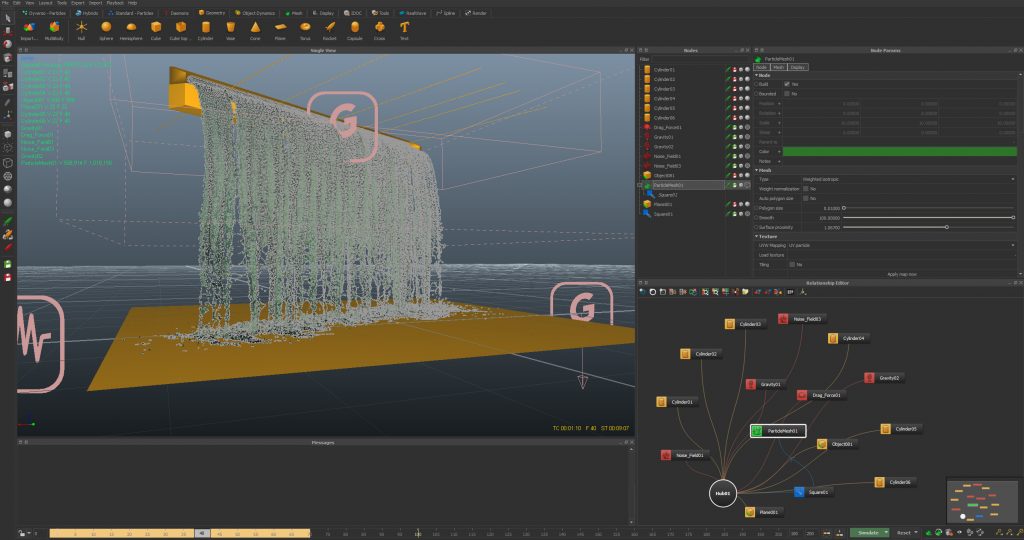
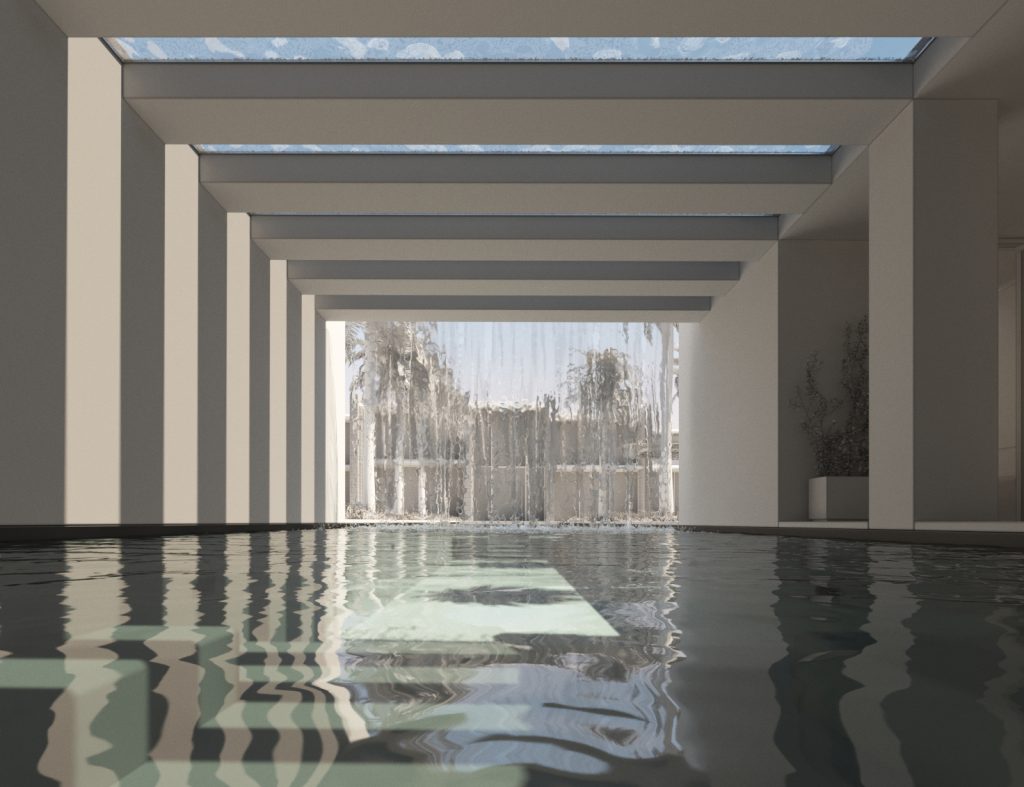
Caustics & Postwork
The biggest challenge we faced with this shot was the generation of the caustic effects. This scene had 3 separate water surfaces (the pool, the waterfall & shallow water feature above the pool itself) all of which would have a caustic effect of varying strength.
Although still in development, we endeavored to use Corona caustics for this scene but ultimately went with a 3rd party option due to deadline considerations. Once we were happy with the caustic effect generated from the various water elements they were compiled into mask which we could use in post.
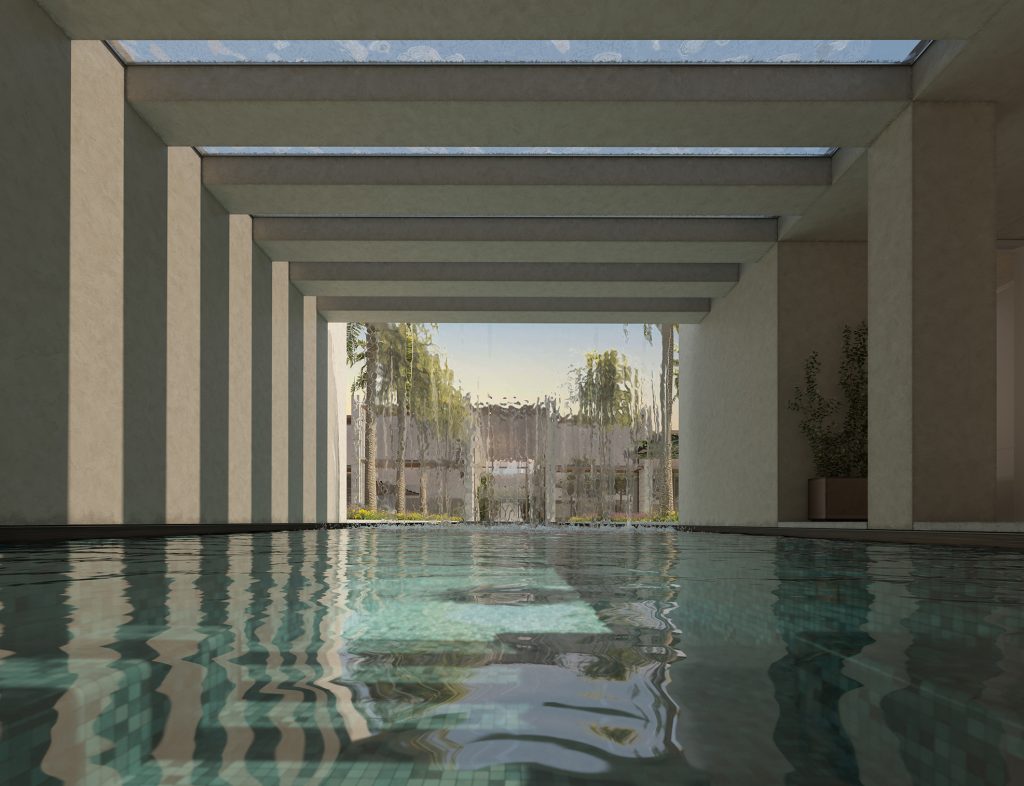
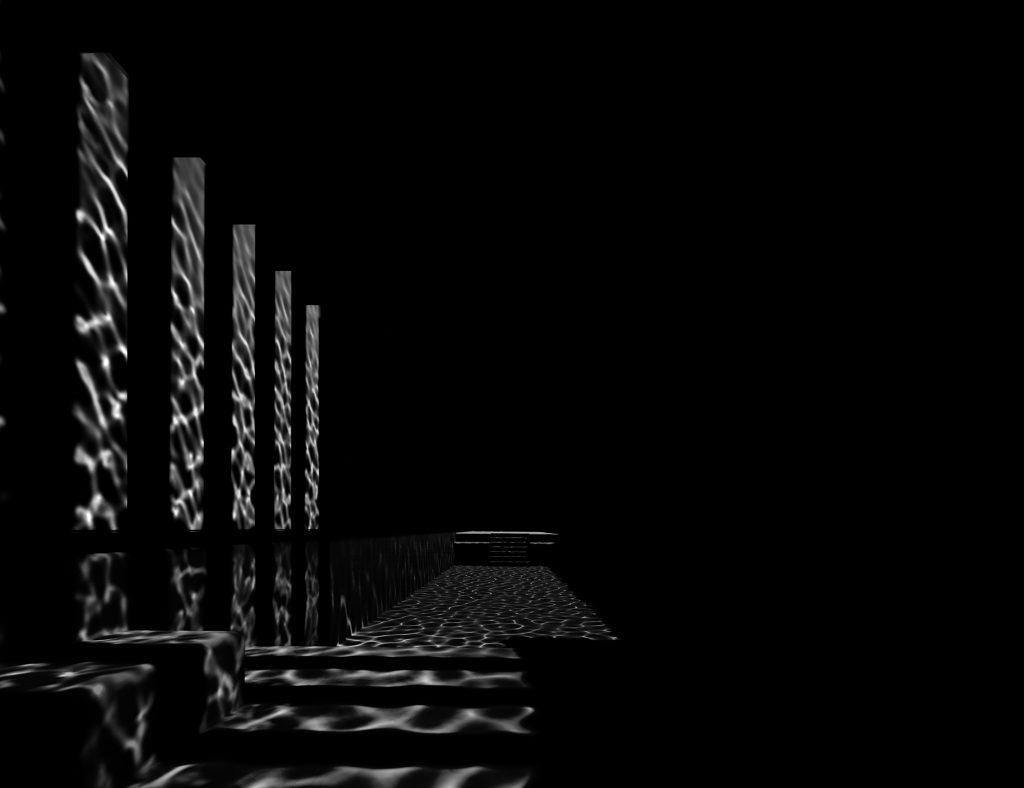
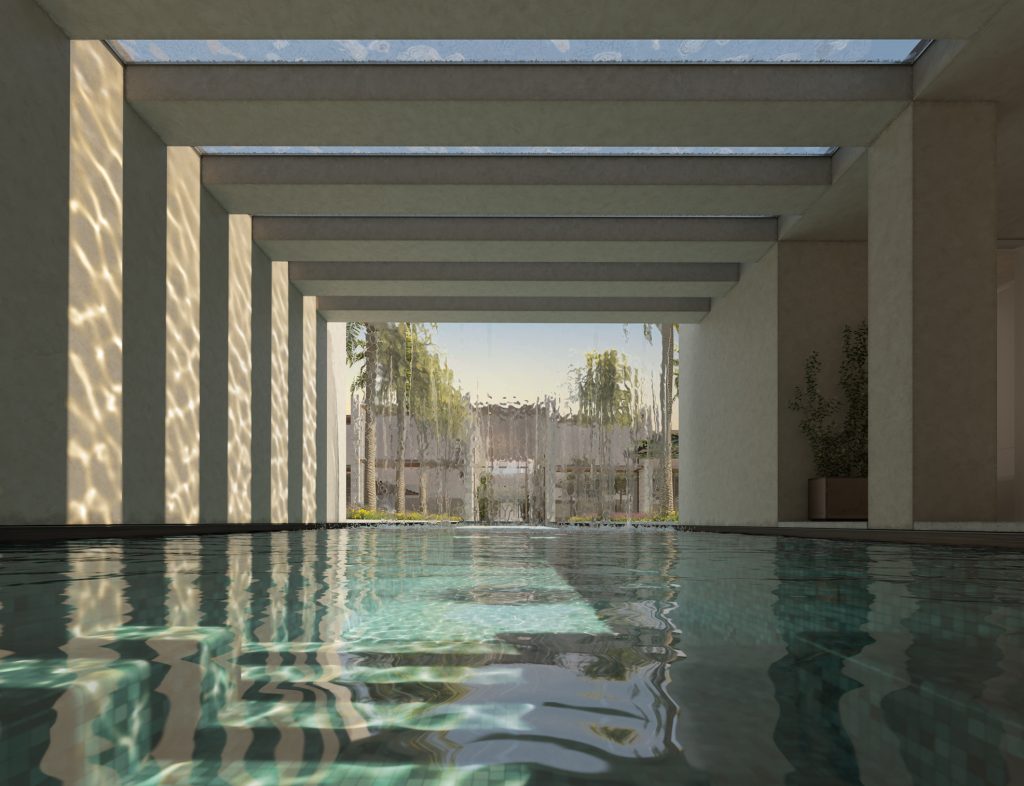
As we had clear direction on how we wanted the waterfall to appear and using some reference found online, we created an additional mask that would help give movement and life to the waterfall mesh. We used this mask on various blending modes (screen, overlay and so forth) to achieve the desired outcome.
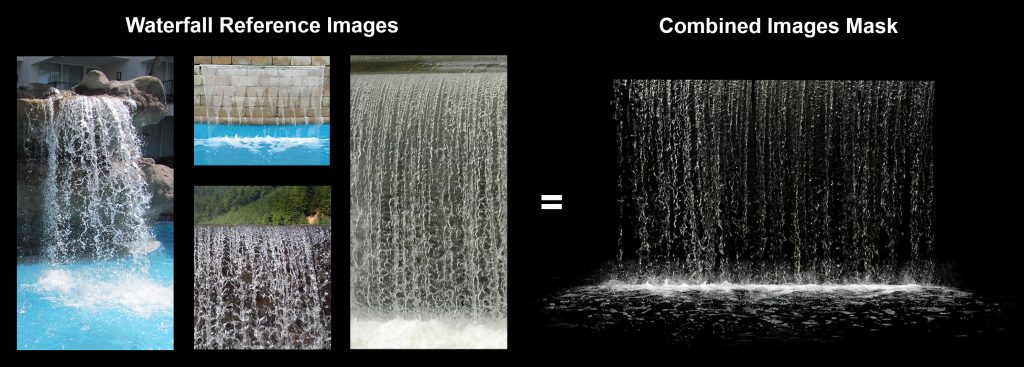
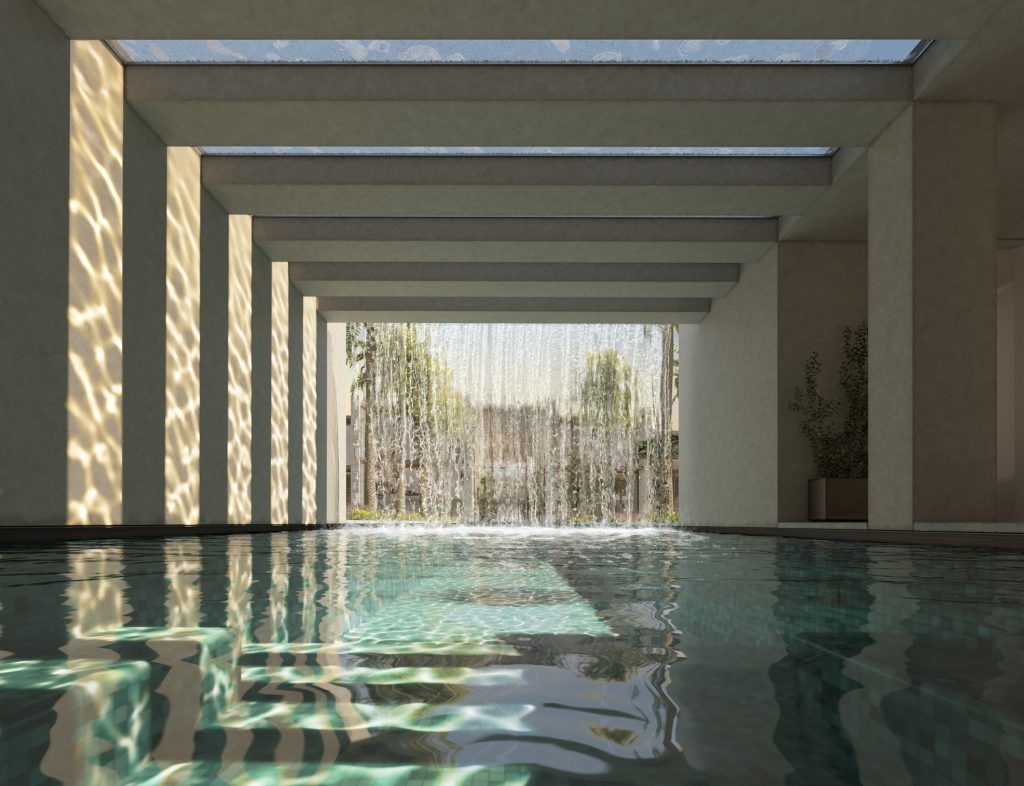
Beyond this, all that was required to finish the shot was the final colour grading. We use plugins like Magic Bullet Looks and Google’s Colour Efex Pro as well as additional layering within Photoshop to refine the imagery to where we want it. Included below is an animated GIF highlighting the progression of the imagery from raw render to final.
That’s It! Hopefully this has given you a little more insight into our workflow creating this image. We are really happy with the way to market has received SO-ON thus far and we look forward to sharing more of our project work with the Corona community.
SO-ON Team.
Links:
Website: http://so-on.com.au/
Facebook: https://www.facebook.com/soonarchviz/
